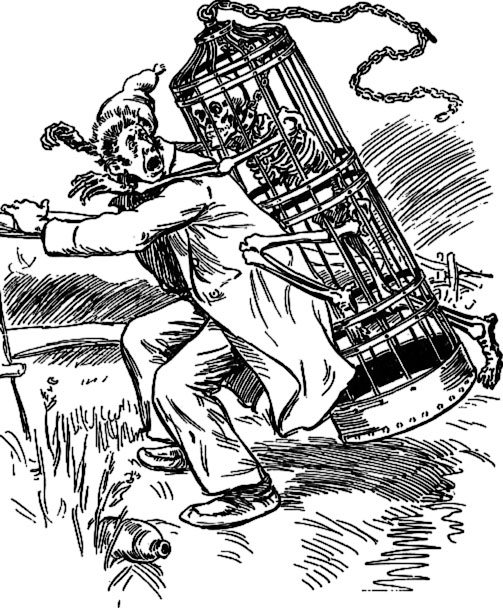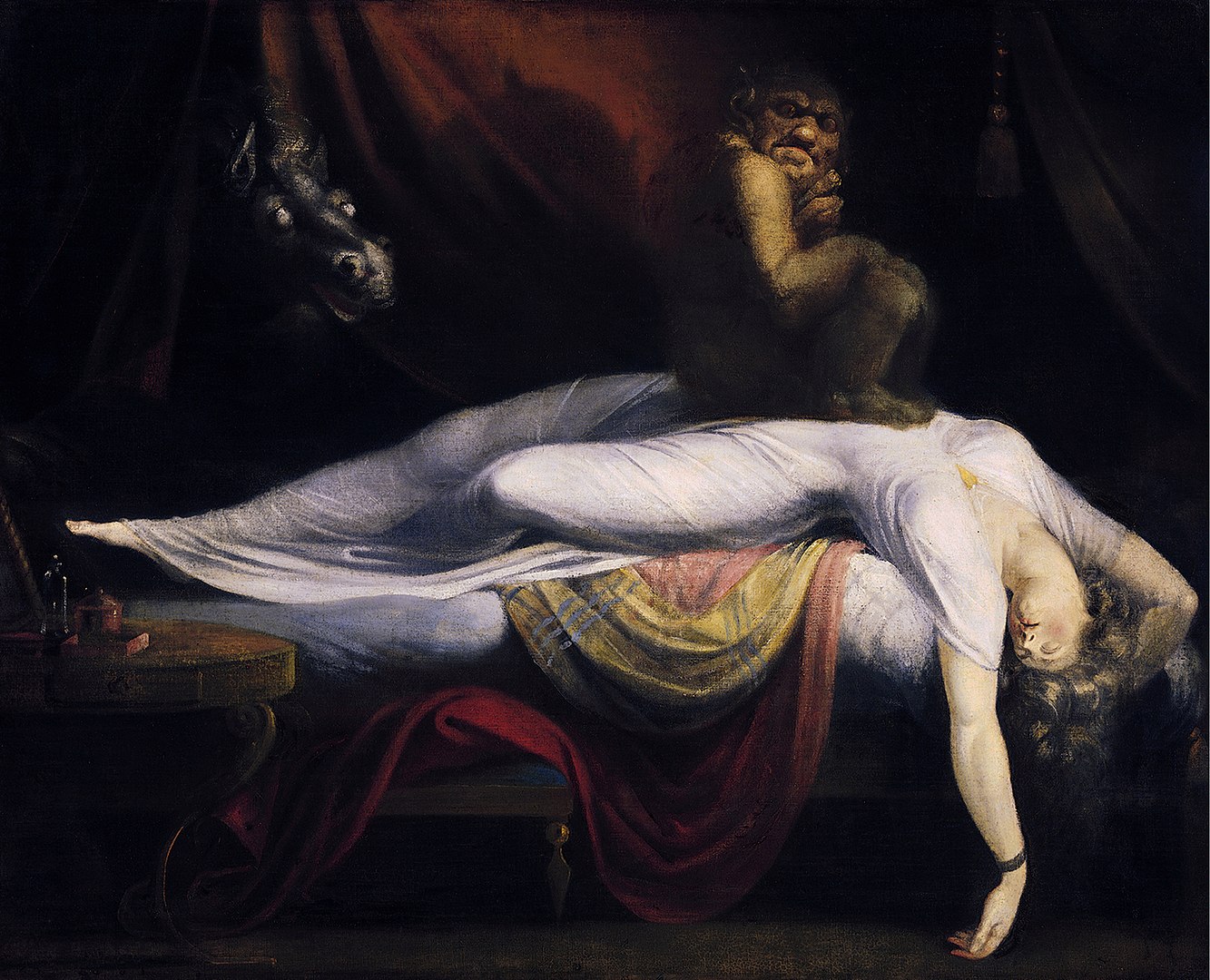Canadian Urban Legends:
La Corriveau of Quebec City
Cagey.

La Corriveau, in her cage. Sketch by Henri Julien for Les Anciens Canadiens by Philippe Aubert de Gaspé
On April 15, 1763, Marie-Josephte Corriveau, known as La Corriveau, was condemned to death by an English army court martial for murdering her second husband. She was hanged on the Plains of Abraham in Quebec City, and her corpse was left exposed in an iron cage for five weeks at Pointe Lévy on the south shore of the St. Lawrence River. But the circumstances around her crime and the odd fate of her body have transmuted into legend in Quebec in the centuries following this tragic story, with historical details and fantastic embellishment clustering together in a macabre tale.
As a sixteen-year-old, Marie-Josephte married Charles Bouchard, her first husband. Eleven years later, and after the couple had three children, Bouchard died. Legend suggests that Marie-Josephte had killed him by pouring molten lead in his ear. Some say they had no children, which was unusual in those days, suggesting an unhappy marriage.
As expected, the young widow remarried, this time to farmer Louis-Étienne Dodier. It was a troubled marriage, spiced with disputes between Dodier and his stepfather, Joseph Corriveau.
Tongues began to wag in the community when Dodier was found dead in his stable, apparently kicked in the head by a horse. When the British doctor later reported that none of the wounds on Dodier’s body could have been made by hooves, Marie-Josephte Corriveau and her father were arrested. Rumours flew; Marie-Josephte had killed her husband with a pitchfork and then dragged him into the stable. More scandalously, or so the legend goes, she let her father take the blame. Marie-Josephte was to receive 60 lashes and have her hand branded with a capital M for murderer.
The night before Marie-Josephte’s father was to have been hanged, he received confession and admitted he had not been the killer. The case was reopened, and Marie-Josephte was sentenced to hang.
Sometimes the most lurid details are the bureaucratic ones: it was the British authorities’ decision to not bury her but rather put her body in a human-shaped iron cage or gibbet (think body cast, but in iron). The locals pitied Marie-Josephte. She and the cage were placed at the intersection of commonly used roads, presumably as a macabre warning. Treating her remains so callously certainly disgusted the local population, however, as a convicted murderer, she could not be buried in a cemetery. But, to the frustration of the British, the cage disappeared: La Corriveau had become mobile, cage and all. As early as 1866, author Philippe Aubert de Gaspé wrote down the folk tale that arose to explain this odd disappearance and included a key element.
A loan night traveller, François Dubé, hears an unusual tick tock, which readers recognize as the sound of the wind blowing through the cage and the bones of La Corriveau. As night falls, Dubé takes pity on La Corriveau’s soul and recites a de profundis (prayer for the deceased’s soul), especially important since La Corriveau had never received last rites from the Church.
Soon afterward, in the pitch black, Dubé cannot see that La Corriveau has reached through her cage and is climbing on his back. La Corriveau wants Dubé to piggyback her across the St. Lawrence River to Île d’Orléans where her fellow witches and will-o’-the-wisps are celebrating their Sabbath. Because the river is blessed, La Corriveau needs the help of Dubé, a good Christian.
Dubé faints. When he awakens the next morning, he assumes his terrifying experience was a dream—until he sees an empty liquor bottle. He concludes that La Corriveau drank its contents. Others might deduce something more obvious.
The story of La Corriveau is one of the few Québécois folk tales whose origins that cannot be traced to similar centuries-old ones in France, according to De Ker-Is à Québec by Fernand Grenier, a study of legends in both France and New France. Now any strange noise heard at night would be attributed to “the wind blowing through the cage and skeleton of La Corriveau.”
The legend, now over 250 years old, still causes emotion in Quebec. It is generally agreed that La Corriveau was a victim of spousal abuse and could not have received a fair trial, as it would have been conducted solely in English. (It took place just four years after New France fell to the English.)
Movies and plays have been written about her—as well as dozens of books. And every so often, her cage reappears as a temporary exhibit in Quebec City, only to disappear again.




